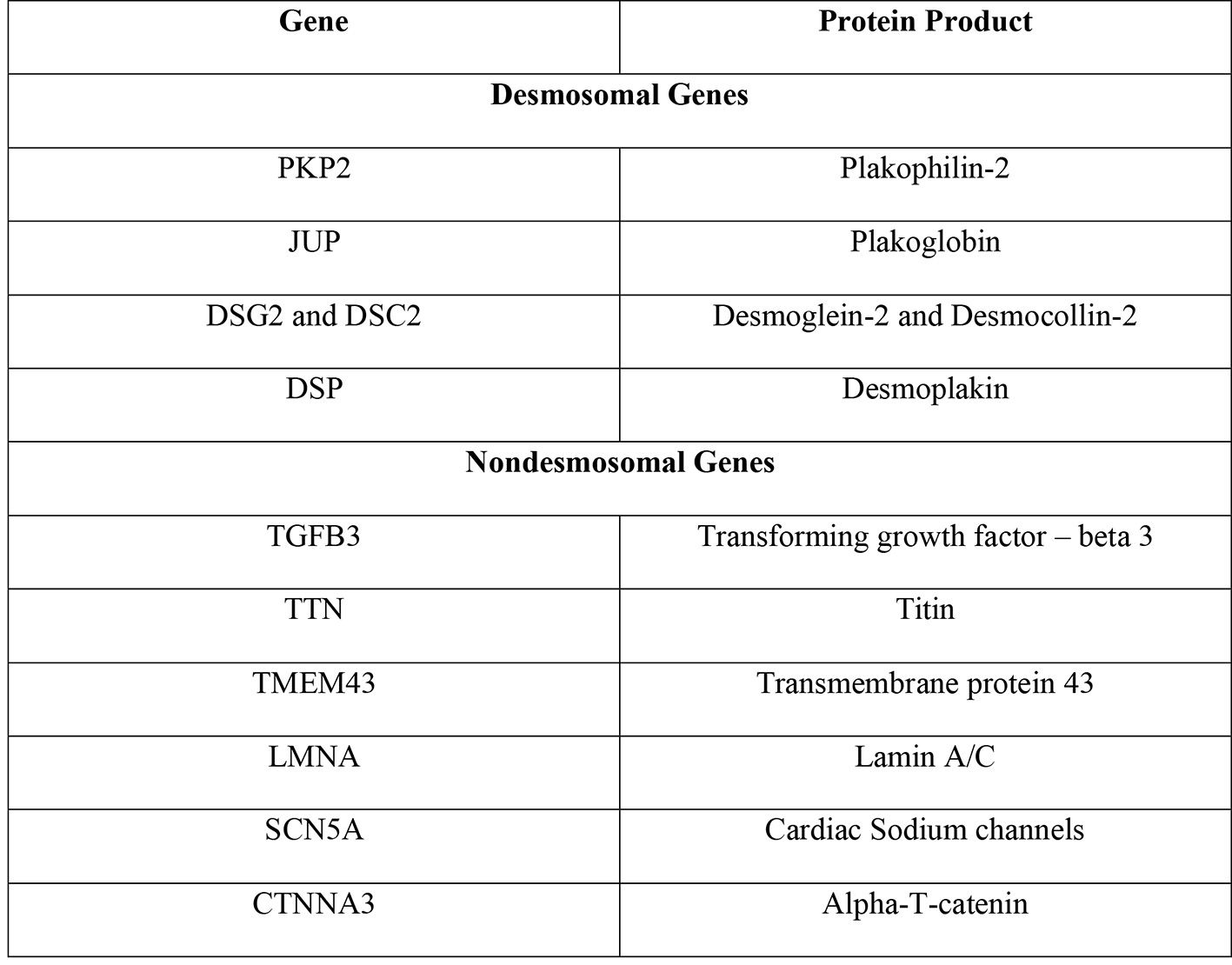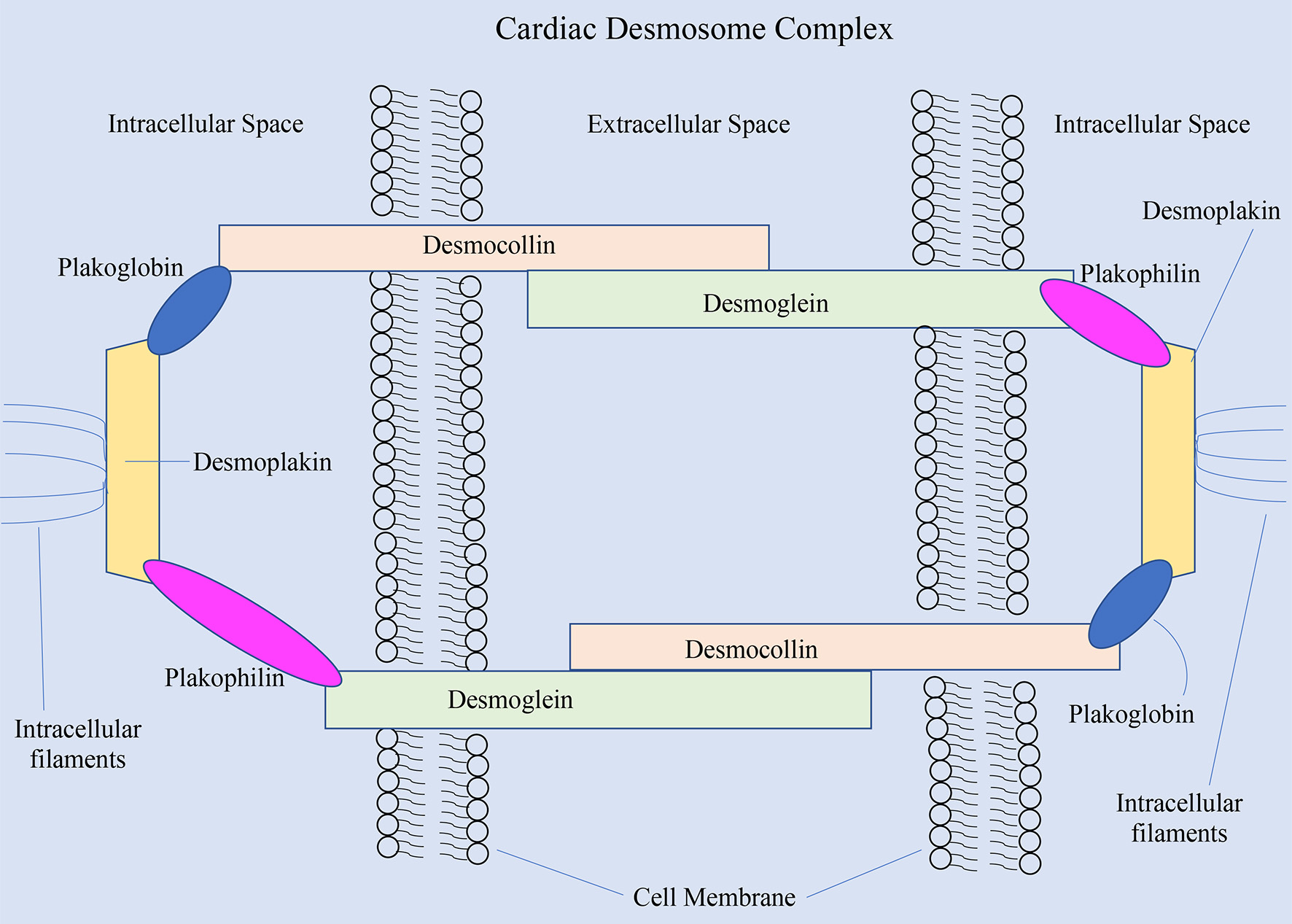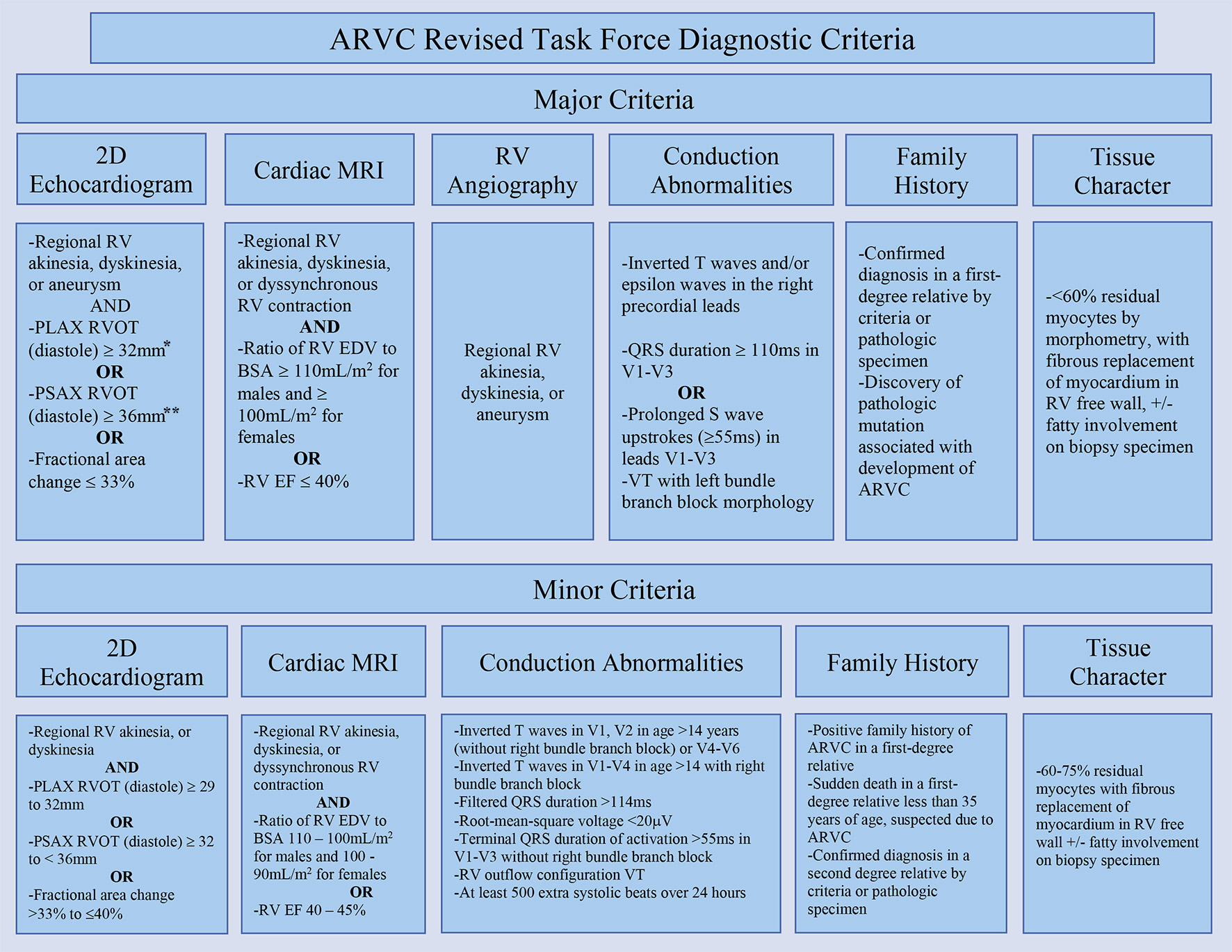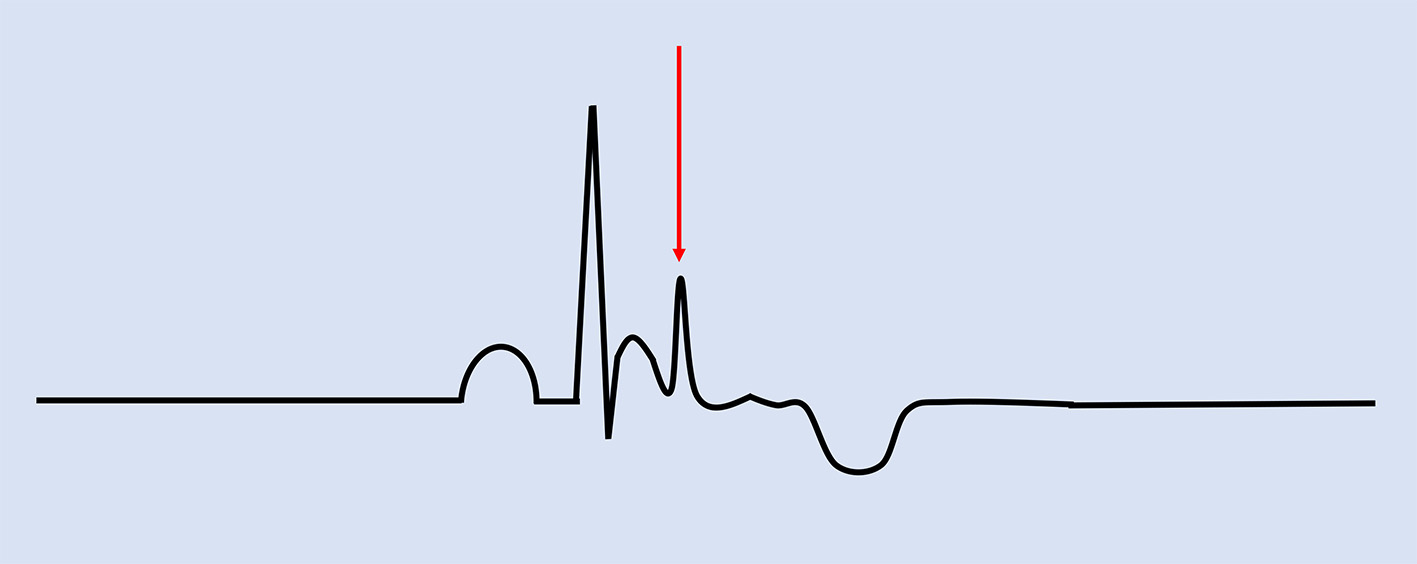
Figure 1. Genes implicated in ARVC and their protein products [8]. ARVC: arrhythmogenic right ventricular cardiomyopathy.
| Cardiology Research, ISSN 1923-2829 print, 1923-2837 online, Open Access |
| Article copyright, the authors; Journal compilation copyright, Cardiol Res and Elmer Press Inc |
| Journal website https://www.cardiologyres.org |
Review
Volume 13, Number 4, August 2022, pages 177-184
Arrhythmogenic Right Ventricular Cardiomyopathy: The Role of Genetics in Diagnosis, Management, and Screening
Figures



